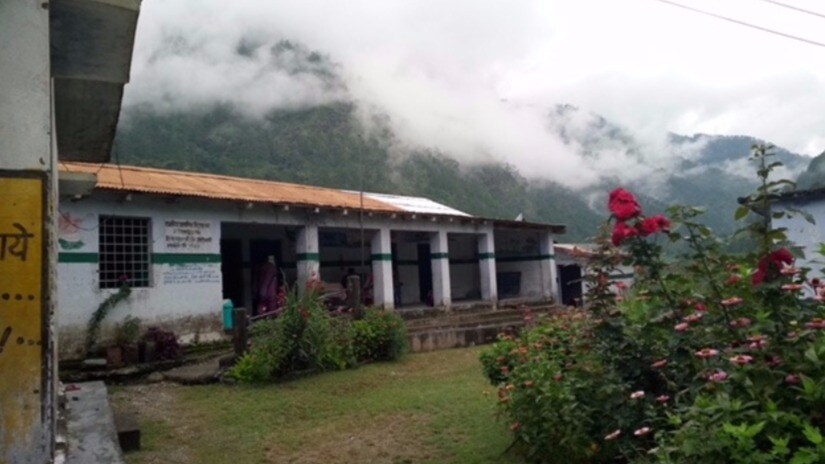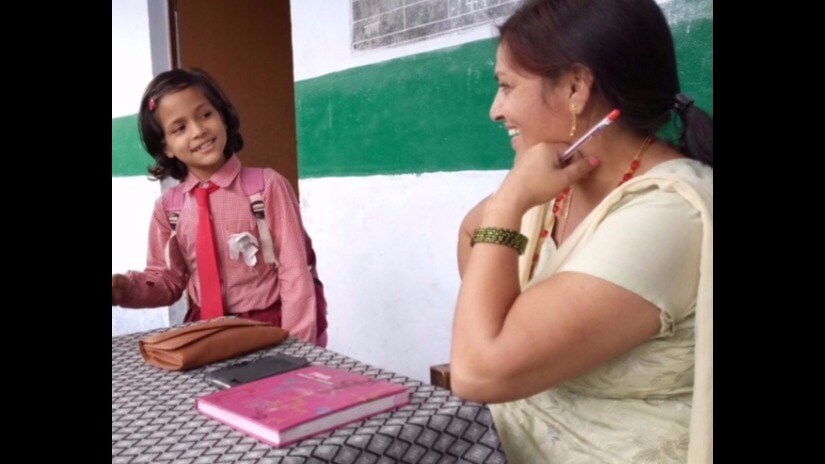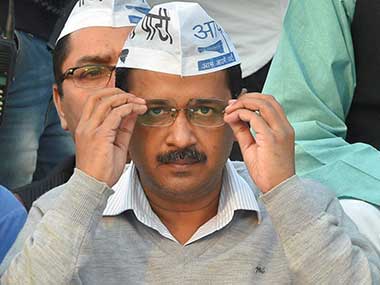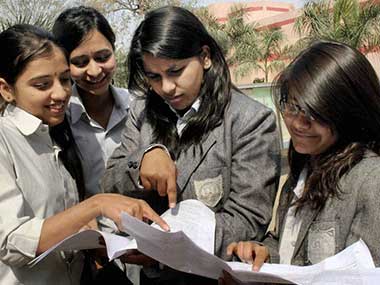The year 2017 provided me the privilege of visiting over 200 teachers in 75 schools across districts as far apart as Yadgir in Karnataka and Udhamsinghnagar and Uttarkashi in Uttarakhand. The schools I visited and the teachers I met were a selection from among those recommended by my colleagues who have spent years working in these regions. My visits — let us call these Good Schools/Good Teachers — were meant to synthesise evidence and insights that could support or weaken the assertion that these were good schools (and teachers). Each school may be a case study by itself but when one looks at them in a panorama, the richness of common threads that run across them is humbling. In my earlier columns in this series (across parts one, two, three and four), I have written about some of the striking features that exemplify such schools and teachers. In this essay, I shall attempt to share my abiding memory of the many female teachers I met in these schools.
One observed how these teachers worked. One tried to understand their perspectives on education and see how these translated into equity and quality in the classrooms. We talked about pedagogy, about children and learning, about their own development as professionals — but one was also accorded the privilege of glimpses into their everyday lives and routines. One marvelled at how they juggled multiple responsibilities without losing composure or hope, and understood how much the progressive outlook and support of husbands, in-laws and parents enabled and strengthened these women. In our conversations, the Scooty of the female teacher became a symbol of their spirit. As did the unattended grocer’s shop whose owner had gone to help his teacher-wife receive children at the bus stand for a sports event. I marvelled at the young mother with an infant at her hip leaving her ‘sasural’ with the blessings of a joint family to take up a posting at a distant village. It was a journey of discovery and running through this was a core of self-belief, courage and optimism that defines what it means to be a woman who is a teacher in rural India.
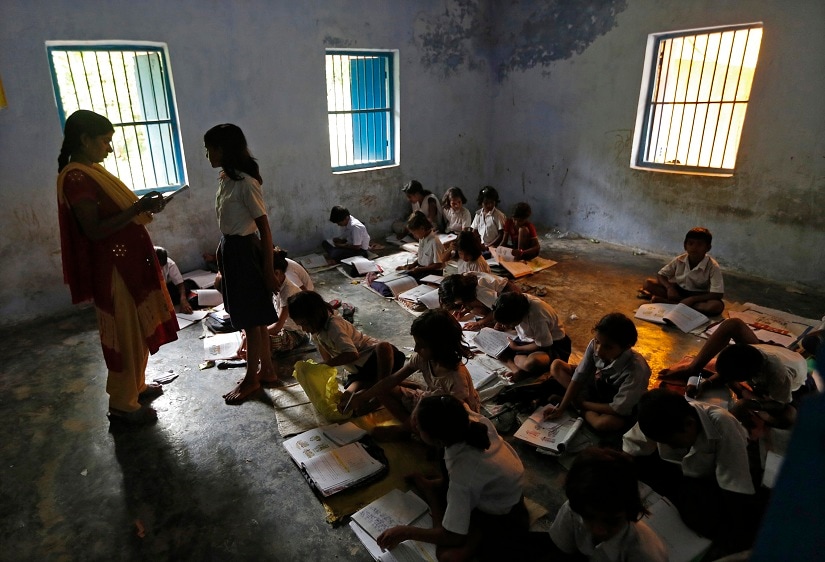
A core of self-belief, courage and optimism defines what it means to be a woman who is a teacher in rural India. REUTERS/File Photo
***
In the hills of Garhwal is the village of Gamdidgaon — a gentle, winding, uphill trek of around two km from the main road. During monsoons, the clouds pass softly over the roof of the school building. Madhulika Thapliyal is the head teacher of the primary school, and is assisted by Pavitra Rawat. The two share the teaching of all subjects for the five classes. Madhulika became a teacher in 1993 and it is now 11 years since she moved to Gamdidgaon, where she has built a deep and lasting relationship with the community. Madhulika lives in a place called Kutchidevi, which is many miles away. Her day begins at 4 am as she prepares food for the joint family. By 7 am, she takes a bus to the point nearest to Gamdidgaon. From there, she takes a shared auto to the base of the hill for the two-km trudge uphill. Every monsoon, on more than one occasion, Madhulika sinks waist deep in slush at some point or the other during her trek to the school. A friendly tree branch enables her to haul herself up and proceed. She must be at school by 7.45 am; she has never been late. She has proven to be a fine teacher too.
If you ask Madhulika what makes her such a fine teacher, she will just shrug and say, ‘I am not doing anything special.’ On observing her, one notices a teacher of some skill, who ensures every child is engaged. Further observation reveals the children are completely at home in the classroom. Even on the rainiest days, 36 of the 39 children will be at school in time for the morning assembly — they do not want to miss even a day. Often, in lonely outposts like Gamdidgaon, the learning achievements of first generation learners are only an incidental indicator of school quality. The ability of children to discuss issues freely with their teacher, or the way they take turns to write ‘the news of the day’ on the blackboard in the courtyard is a more nuanced indicator. On this board one sees the news item — ‘Shivraj’s father is coming today from Dehradun' — indicating what an important event it is for the village. Or one might read, ‘In our village, the great-grandmother of Pankaj has fallen very ill’, demonstrating concern for the health of a classmate’s dear one. For Madhulika, this village news bulletin is an important indicator of children’s abilities to express themselves and the social values they are developing in her school.
***
Thousands of miles south, is the tribal hamlet of Geddada Narayana Thanda in Surpur Block of Yadgir district, one of the most disadvantaged regions in the country. The primary school is the window to a better future for the children. It is here that Kashibai began teaching in 2003. Married to an instructor in an ITI School, she lives in a town some miles away and commutes to school on her Scooty. Anyone observing her classrooms will see how well the children have been prepared to study independently, and to help each other. The quality of conversations with the children will indicate the quality of learning here. In the Karnataka School Quality assessment, a few years ago, her school was rated the best among the lower primary schools in Surpur. At her school, in a small alcove, Kashibai has curated a superb collection of teaching aids, meticulously selected by her. Even during vacations to Dharwad or Bengaluru, Kashibai keeps an eye open for such material and makes time to visit book publishers and education fairs. Kashibai’s remarkable work has not gone unnoticed. In 2015, she won the best teacher award for Yadgir District and was among eight teachers from Karnataka who presented her experiences at the conference organised by MHRD in Bhubaneswar. The people of Geddala Narayana Thanda will never let her go.
***
Gyansu is just a few kilometres from Uttarkashi town. The Primary School is an old establishment. Always a good school, it has an even better reputation these days, because of head teacher Rameshwari Lingwal and her colleague Darbeshwari Bahuguna. Rameshwari joined the education department in 2001 and was posted to a remote village school in Chinyali Block, many miles away from home. On her first day, she left home at 7 am but reached school only at 1 pm, to be greeted by a locked gate. Next morning, a determined Rameshwari was able to reach school by 11 am but realised that the only way she could work would be if she were to live in that village. Rameshwari was married and had a two-month-old daughter. Leaving her husband and in-laws behind, she found accommodation in the village and for the next five years, she lived there with her daughter, away from husband and family. Once in two months she would visit home, but otherwise was completely devoted to the school. She would carry her infant to school and everywhere she went. Very quickly she had won the hearts of the people of Banaut village.
In 2010, she was transferred to Gyansu. Life is relatively better organised, home is not far from Gyansu and her husband runs a shop in Uttarkashi. Of course she does not have a minute to spare. When home, she looks after her 90-year-old father-in-law and other elderly members. She gets up early to cook for the family and by 7 am she is ready to leave for school, with optimism and good cheer. Rameshwari maintains a daily diary and says, ‘To reflect on what went well and what did not, during the day is important because every day is a fresh experience.’
In many government schools, teachers go the extra mile for their economically and academically disadvantaged children. Here at Gyansu, while the government provides free uniforms for all the girls and all the children from the SC community, there are a few boys who cannot afford to buy the uniform. Rameshwari and Darbeshwari fork out their personal money for these boys. For Rameshwari, the concept of Continuous Comprehensive Evaluation (CCE) never seemed like a new introduction. She says, ‘We know each child intimately and know what she has learnt. Our children do not even know whether we are assessing them, it is a natural part of a day’s teaching and learning at school.’ Rameshwari’s work has received more recognition recently. In 2015, she was awarded the Rajya Shikshak Puraskar. She modestly says, ‘This was always a good school and all the teachers here were always dedicated.’
***
The district of Udhamsinghnagar is all flatland and plains. On both sides of the road, as far as eye can see, are vast fields. In the winter, they are green with the early shoots of wheat and by March, they are tall and brown, ready for harvest. The district shares its southern border with Uttar Pradesh and has more in common with this state than with the other districts of Uttarakhand. It was on a crisp winter morning that we visited the primary School in the village of Matiyayi in Sitargunj Block. Managing the school of 107 children was Meena Rana. Matiyayi is made up of people from the Tharu tribal community and the Sikh community. Meena belongs to the tribal community and 15 years ago, began here as a temporary help and a shiksha mitra. Over time, with a dynamic head teacher called Nemaichand, Matiyayi developed into a good school. Meena learnt and grew along the way and was appointed teacher in due course.
After Nemaichand’s transfer, Meena now manages the school. Married at the age of 16, she went to her ‘sasural’ where her father-in-law was more than a father to her. He gave her a cycle and insisted that she complete her Intermediate course in the nearby town of Sitargunj. She did her BA too. By then, she was also the mother of three children. It was after her third child that her father-in-law encouraged her to take the shiksha mitra role at Matiyayi Primary School. Her husband too was a pillar of support. During her college days, if she offered to work in the fields, he would say, ‘Abhi tumhare padhaayi ke din hain’. Some years later, as she settled into her teacher’s role in Matiyayi, her husband encouraged her to learn farming. It was a big thing, says Meena, since farming is considered a male bastion and to this day Meena admires her husband for encouraging her to work at the farm. Her school has a fine library and she is inordinately proud when she says, ‘Bacche koshish karke padh lete hain’. She is shy, but her confidence peeps out when she says, ‘If the school is good, even the rich farmers will send their children here. Now, I just phone the parents if I have to discuss anything and they come immediately’.
It is — one must remember — a world where gender equality is a far cry, but these women are navigating their path through their actions rather than words... Gaining that equality, sometimes in a supportive environment of the immediate family and sometimes not. These are just a few vignettes and glimpses from the lives of these heroes, ordinary people doing extraordinary things.
Next time, when someone discusses rural government schools, do remember to share the stories of Rameshwari, Meena, Kashibai and Madhulika. There are many, many more.
S. Giridhar, is the Chief Operating Officer of Azim Premji University and can be contacted on giri@azimpremjifoundation.org
Published Date: Jan 08, 2018 10:57 AM | Updated Date: Jan 08, 2018 10:57 AM


